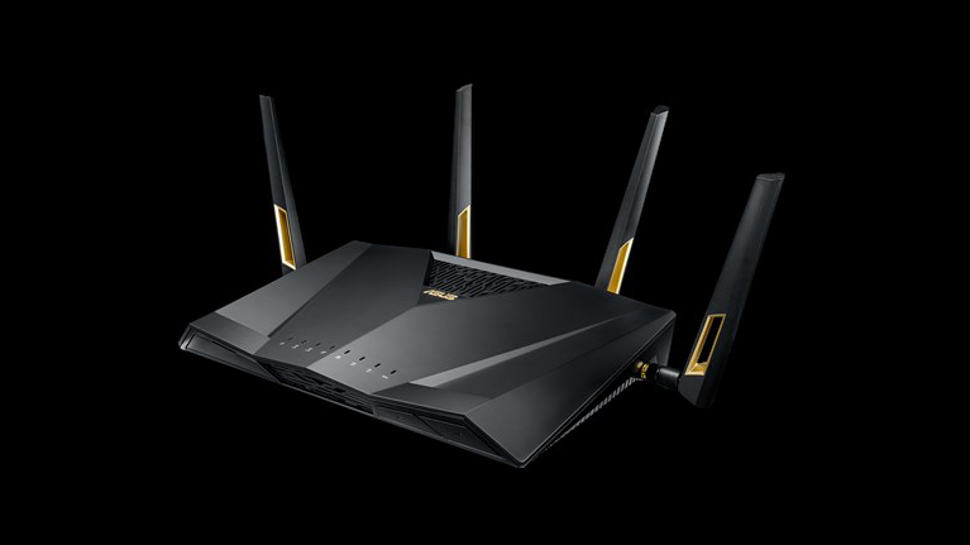Wi-Fi 6: everything you need to know

By now, you’ve probably already heard the term Wi-Fi 6 thrown around by your network-savvy friends or colleagues. And, just like the majority of the population, you probably don’t know exactly what that term means, and how it will affect you and your digital life.
Well, we’re here to answer all your questions for you, starting with what exactly Wi-Fi 6 is.
In a network nutshell, it’s the next-generation wireless technology that was previously known as 802.11ax until the Wi-Fi Alliance decided to rename it more succinctly. Wi-Fi 6 supplants 802.11ac (now known as Wi-Fi 5), which most current routers and devices run.
The general idea of this renaming is to make the standard easier to remember and understand. Rather than regaling you with a meaningless string of numbers and letters that most people will most likely forget, you get something more in line with phone naming standards like 3G, 4G and 5G.
A new naming convention aside, what exactly do Wi-Fi 6 and Wi-Fi 6 routers offer to regular consumers like you? To put it simply, it provides faster wireless speeds – which is kind of a given, really. But more to the point, it’s designed to offer a much better Wi-Fi performance in device-crowded environments, as well as provide several other efficiency benefits.
Want to know more about this upcoming wireless standard and what it may mean for your home or office? Read on for the complete lowdown, as well as all the latest news and rumors on this promising step forward for Wi-Fi.
- What are the best wireless routers out there?
- Here are the best Wi-Fi extenders.
Cut to the chase
- What is it? Wi-Fi 6 is next-gen wireless tech that replaces 802.11ac (Wi-Fi 5)
- When is it out? Late 2019
- What will it cost? Pre-release (draft standard) Wi-Fi 6 routers start from £200/$200

Wi-Fi 6 release date
According to the Wi-Fi Alliance, the non-profit overseer of the Wi-Fi world, Wi-Fi 6 will come out ‘later in 2019’. By all accounts, that will most likely be towards the tail end of the year (assuming no serious slippage is encountered). A certification programme was announced back in January to make sure that Wi-Fi 6 branded devices meet the relevant specified standards, and this scheme is predicted to start in the third quarter of 2019.
Sign up for breaking news, reviews, opinion, top tech deals, and more.
At this point, you may be thinking "wait a second: aren’t there already Wi-Fi 6 routers out there (although most of them are still labelled 802.11ax)?"
And you’d be correct – there are indeed Wi-Fi 6 routers already on the market. In fact, we have five of the best Wi-Fi 6 routers already picked out for you, in case you’re ready to make the jump to this new wireless technology right now. These Wi-Fi 6 routers include the Netgear Nighthawk AX8 and AX4, TP-Link’s Archer AX6000, and the Asus RT-AX88U (indeed Asus even has a Wi-Fi 6-toting mesh router offering which is imminent).
However, they come with a few caveats. Remember that these early devices are based on the draft standard of Wi-Fi 6, which hasn’t yet been finalized (and won’t be until later in the year). This means that these routers might miss out on some features that fully certified Wi-Fi 6 devices are required to carry.
Of course, that depends on whether the spec that manufacturers must stick to will change between now and the official launch of the new standard. From what we’ve heard, any potential changes will be minor. Still, we won’t know the specifics until the Wi-Fi 6 is officially launched.
Furthermore, even if you do have a router that supports (draft) Wi-Fi 6, you’ll also require Wi-Fi 6 compatible client devices on the other end of the connection to really benefit from the new Wi-Fi standard. Early adopting pieces of hardware are even thinner on the ground, at least right now, one example being Samsung’s Galaxy S10 smartphone.
That said, a host of laptops supporting Wi-Fi 6 from all the major vendors were announced back at CES 2019 and now at IFA 2019, and it shouldn’t be long until those laptops hit the shelves (for starters, take a look at the new Alienware notebooks' implementation).
After the official launch of Wi-Fi 6 late in 2019, moving into 2020, you can expect a quick increase of both supporting routers and client hardware, all of which will be certified to the fully finalized Wi-Fi 6 standard.

Wi-Fi 6 routers and pricing
To give you an idea of the price of Wi-Fi 6 routers, let’s take a quick look at some of the costs of the aforementioned routers, which have already been made adhering to the draft Wi-Fi 6 spec and are not on the shelves.
TP-Link’s Archer AX6000 is a Wi-Fi 6 router that currently goes for around £300 or $350 (about AU$510), while the Asus RT-AX88U is priced at about £300 or $325 (around AU$470).
Netgear’s Nighthawk AX8, on the other hand, can be gotten for around £280 or $300 (about AU$435), with the Nighthawk AX4 purchased at around £200 or $200 (about AU$290), which is as inexpensive as it gets right now.
We will, of course, see more budget-friendly Wi-Fi 6 routers coming onto the market as time goes on and as the number of competing devices grow.
As for Wi-Fi 6 client products, Samsung’s Galaxy S10 currently starts at an eye-watering £799 or $899 (AU$1,349).

Wi-Fi 6 spec and performance
Wi-Fi 6 operates over 2.4GHz and 5GHz (and more frequency bands in the future) – unlike Wi-Fi 5, which is 5GHz only – and it will be quicker than its precursor as you’d expect. Exactly what sort of speed bump we’ll ultimately get won’t be completely clear until its official release (and will vary in different scenarios anyway).
In theoretical terms, Wi-Fi 6 increases peak speeds by 37% compared to Wi-Fi 5 (when using a single device). While you won’t likely get all of that gain – it’s a bit of a ‘how fast is a piece of string tied to the bumper of a moving car’ scenario – you would still achieve a sizable chunk of it, and a very significant uplift in terms of raw performance.
Unlike previous Wi-Fi standards however, this new version isn’t just focused on purely enhancing headline speeds. Rather, Wi-Fi 6’s priority is to enable much better performance in crowded environments where there are a ton of wireless devices. Such environments include an apartment block, a public venue such as a stadium, and even your home, if you have a number of family members who own multiple mobile devices and PCs each.
It’ll also focus on managing the connectivity strain caused by the ever-multiplying number of connected IoT (Internet of Things) devices and smart home gadgets.
Wi-Fi 6 uses various technologies to achieve all this, including a key player in the form of OFDMA (Orthogonal Frequency Division Multiple Access). This lets more folks simultaneously use the same wireless channel for far more efficient operation, not to mention better throughput and much lower latency (meaning a more responsive connection).

Wi-Fi 6 also makes use of MU-MIMO, which has already been assimilated with Wi-Fi 5 hardware, and allows for a larger amount of data to be transferred at once – not to mention, the handling of multiple client devices simultaneously. In Wi-Fi 6, the technology has been upgraded to double the number of spatial streams that can be transmitted from a maximum of four previously, to now potentially cover eight devices. Plus, it adds support for uplink – transmissions back from the client device – as well as downlink.
So yes, there’s a bit of jargon involved here, with other clever bits of trickery including better beamforming for superior speeds at range, and 1024-QAM being utilized (as opposed to 256-QAM in Wi-Fi 5) for better throughput.
Apart from the unfamiliar acronyms and techie-sounding stuff, the performance takeaway when it comes to congested wireless environments (where loads of devices are online) is that Wi-Fi 6 promises to enhance the average throughput per user by four times (or more). That’s quite a substantial improvement in heavy-trafficked areas, and it’s backed by the promise of increased network efficiency also by a factor of four.
With more and more pieces of hardware going online – especially given the increasing popularity of smart home gadgets, connected appliances and IoT devices, in general – these improvements will be critical moving forward. If we stay with Wi-Fi 5, we’d basically become stuck in the wireless mud.
There’s a further boon on the efficiency front to Wi-Fi 6, and that’s improved battery life for client devices. This is achieved with a technology called Target Wake Time (TWT), which essentially lets the router and client talk to each other to determine when the client device will need to wake up to transmit (or receive) data. As a result, the client hardware won’t have to be persistently listening for wireless signals, which in turn means less battery usage.
This will be especially useful for IoT gadgets that only communicate online irregularly, as well as the likes of wearables and to a lesser extent, phones, tablets and laptops. Wi-Fi 6’s overall improvements in network efficiency (by a factor of four) that we’ve previously mentioned should help on the battery front as well, because that will cut down a little on power usage.
When you add everything up in terms of faster overall Wi-Fi speeds, much-improved performance in crowded wireless environments and some power-efficiency driven battery benefits to boot, there’s quite a bit to look forward to with the next-gen Wi-Fi standard, Wi-Fi 6.
- We show you how to get superfast Wi-Fi in every room
Darren is a freelancer writing news and features for TechRadar (and occasionally T3) across a broad range of computing topics including CPUs, GPUs, various other hardware, VPNs, antivirus and more. He has written about tech for the best part of three decades, and writes books in his spare time (his debut novel - 'I Know What You Did Last Supper' - was published by Hachette UK in 2013).